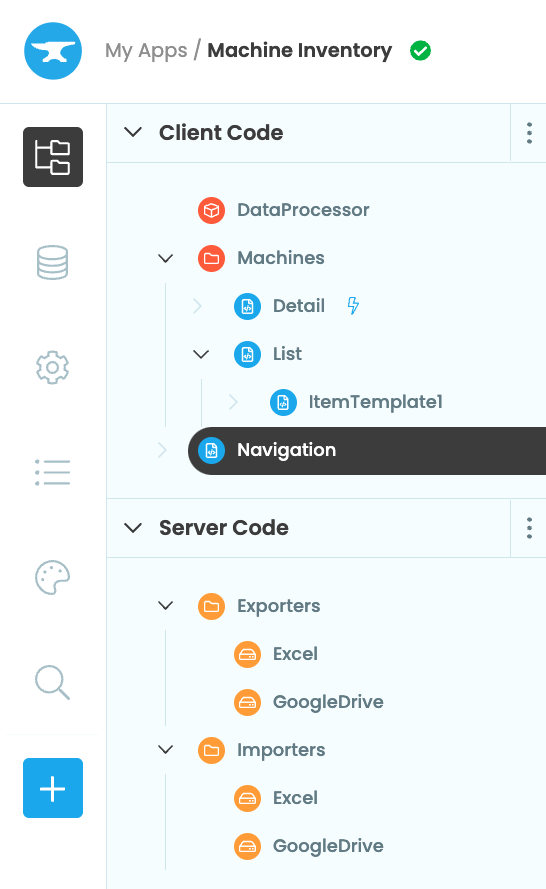Python directory structure
Your app is stored as a directory structure that you can clone using Git. Each Package, Module and Form consists of files and directories within this structure.
Packages
Packages (and Server Packages) are Python packages - directories containing an __init__.py file:
Package1
└── __init__.py
Forms
Each Form is also a Python package: the __init__.py contains what you see in the Code View for that Form. There’s
also a config file that describes the UI design for the Form, named form_template.yaml:
Form1
├── __init__.py
└── form_template.yaml
Modules
Modules (and Server Modules) are simply ordinary files; a Module named Module1 is a Python file named Module1.py.
Package1
├── __init__.py
└── Module1.py
Server vs. Client
Server-side and client-side code are stored in separate directories in the repo. When you check out your app using Git,
you’ll see directories named server_code and client_code:
MyApp
├── __init__.py
├── anvil.yaml
├── client_code
├── server_code
└── theme
Example
Here’s an example of the structure of an app in Anvil, and the underlying directory structure in the Git repo. The Anvil representation is this:

Example app in Anvil.
See below for its directory structure.
Its repo has the following directory structure:
MachineInventory
├── __init__.py
├── anvil.yaml
├── client_code
│ ├── DataProcessor.py
│ ├── Machines
│ │ ├── Detail
│ │ │ ├── __init__.py
│ │ │ └── form_template.yaml
│ │ ├── List
│ │ │ ├── ItemTemplate1
│ │ │ │ ├── __init__.py
│ │ │ │ └── form_template.yaml
│ │ │ ├── __init__.py
│ │ │ └── form_template.yaml
│ │ └── __init__.py
│ └── Navigation
│ ├── __init__.py
│ └── form_template.yaml
├── server_code
│ ├── Exporters
│ │ ├── Excel.py
│ │ ├── GoogleDrive.py
│ │ └── __init__.py
│ └── Importers
│ ├── Excel.py
│ ├── GoogleDrive.py
│ └── __init__.py
└── theme
├── assets
│ ├── standard-page.html
│ └── theme.css
├── parameters.yaml
└── templates.yaml
Do you still have questions?
Our Community Forum is full of helpful information and Anvil experts.
